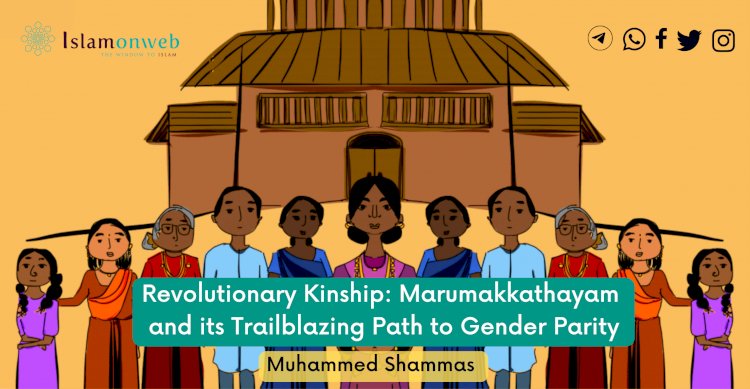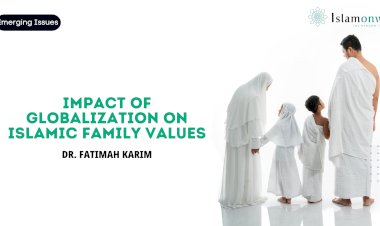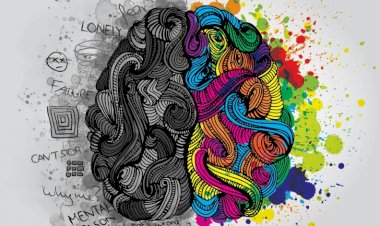Revolutionary Kinship: Marumakkathayam and its Trailblazing Path to Gender Parity
Introduction
The Marumakkathayam system of inheritance presents a unique legal framework where property succession is rooted in the maternal line. This distinctive approach means that kinship connections and property rights are transmitted through the lineage of mothers rather than fathers. The term ‘Marumakkathayam’ translates to ‘inheritance through sister’s children’ and stands in contrast to conventional inheritance norms centered around sons and daughters. The exact origins of this system’s establishment within the female lineage remain a matter of speculation. Functioning as a dual system of inheritance, the Marumakkathayam approach incorporates elements of both matriarchy and patriarchy. Communities such as the Mappilas in Kerala, as well as various groups in diverse regions, have embraced this system, often transitioning from earlier practices to align with Marumakkathayam principles. At the core of this system, the ‘Tarawad’ emerges as a fundamental unit. A Tarawad encompasses all descendants tracing their roots through the female lineage, originating from a common female progenitor.
The term ‘Karanavan,’ found in the Malayalam Dictionary, carries multifaceted interpretations such as "father," "maternal uncle," "elder brother," and "lord." It is also associated with the concept of "senior," as evidenced by "Anandaravan," which signifies "junior." As per the Nair Regulation, the Karanavan denotes the senior male member of the Tarawad, assuming the role of leadership and management within the family structure. In a basic familial setup, the Karanavan oversee a household consisting of a mother, her offspring, and their maternal uncle, who is the brother of the mother. The Karanavan holds authority over junior Tarawad members and is not obligated to provide for them if they choose to leave the Tarawad residence. Property acquisition rights are initially vested in male members; however, in their absence, the senior female assumes this role. The Karanavan functions as the family head and manager, and the property of the Tarawad is entrusted to him as an agent or representative, rather than an absolute owner.
Within the Marumakkathayam system, when no male members are present, the senior female inherits the right to manage and exercises the legal powers attributed to the Karanavan. The eldest male member of the Tarawad, the Karanavan, holds tangible ownership of all Tarawad property, although it is theoretically vested in females. A pivotal right of the Karanavan is the exclusive possession of Tarawad property, both movable and immovable, excluding other members. As the family’s leader, the Karanavan oversees Tarawad affairs, manages finances, and allocates income among family members. While the Karanavan possesses substantial authority over Tarawad income, there is no legal requirement for him to present accounts to junior members, although disputes may prompt such accountability.
Historically, the Marumakkathayam system facilitated Indian Ocean trade dynamics, as men engaged in maritime ventures while women managed property and governed household and social matters on land. Over centuries, countless Muslims residing along the Indian Ocean coast adopted matrilineal systems. In regions like Indonesia, Malaysia, the Malabar coasts and Lakshadweep Islands in India, and select districts in Sri Lanka, diverse forms of mother-centric family, occupation, inheritance, and power structures were observed. These matrilineal Muslim communities often diverged from male-controlled interpretations of Islam, instead embracing gender-equitable or women centric practices. Nevertheless, from the late eighteenth century onwards, male Muslim religious scholars from Arab, African, Indian, and Malay backgrounds began criticizing the matrilineal system, particularly contesting the inheritance norms where men received limited or no share of property.
Matrilineal Practices within Islam along the Indian Ocean Coast
Across centuries, a remarkable phenomenon has unfolded among various Muslim communities dwelling along the Indian Ocean coast, the preservation of matrilineal systems. This distinctive approach to family dynamics, occupation, inheritance, and power distribution has found its home among Muslim groups in Indonesia, Malaysia, the Malabar coasts, the Lakshadweep Islands in India, and select districts in Sri Lanka. Contrary to adopting interpretations of Islam dominated by males, these matrilineal Muslim societies have chosen to embrace practices that often prioritize gender equality and, on occasion, even place women at the centre of their customs and traditions.
Historically, these matrilineal systems have encountered resistance, particularly from male Muslim religious scholars originating from diverse backgrounds such as Arab, African, Indian, and Malay. This resistance was particularly directed at the inheritance norms that allocated minimal or no share of property to men. Within these matrilineal communities, women enjoyed elevated status, held substantial power, and possessed greater property ownership compared to their male counterparts. This departure from prevailing patrilineal and patriarchal norms, commonly linked to Islam by scholars both within and outside the religion, sparked debates and disagreements.
In the face of such criticism, the matrilineal system persevered among millions of Muslims along the Indian Ocean coast. This arrangement, intriguingly, facilitated the region's significant maritime trade. Men were able to embark on trading voyages, sail as sailors, and explore as travellers, while women managed affairs on land, effectively governing households and shaping social spheres. This economic and social stability granted women increased autonomy in matters of economics, personal choices, and even marriage, where their mobility and agency remained prominent.
Nevertheless, the matrilineal system also presented challenges to certain aspects of Islamic tradition, such as property ownership, kinship structures, and matrimonial practices. This system extended its influence beyond coastal areas, as certain non-coastal regions also integrated elements of matrilineal practices. Notably, coastal regions saw the emergence of influential families due to frequent migrations during monsoon seasons. This phenomenon contributed to the dissemination and continuity of this distinct cultural system. In essence, the matrilineal practices within Islam along the Indian Ocean coast stand as a testament to the resilience of diverse interpretations of faith and the ability of communities to adapt and maintain their cultural heritage. Despite facing opposition, these communities have upheld their unique matrilineal customs, enriching the broader tapestry of Islamic practices and demonstrating the multifaceted nature of Islam’s interactions with local cultures.
Malabar Marumakkathayam and its Cultural Legacy
The Marumakkathayam system has been a prevalent and enduring practice within the coastal regions of South Kerala, particularly among the Muslim Mappilas, for approximately three centuries. Notable towns like Kannur, Thalasseri, Mahi, Vadakara, Koyilandy, and others have faithfully upheld this system across multiple generations. At its core, Marumakkathyam embraces a matrilineal ethos, where individuals are recognized through their maternal lineage, and the inheritance of property is channelled through the female line.
In this intricate system, if a tharavad (ancestral home) consists of female members, the property assumes the status of waqf, legally designated to the tharavad. Sons and daughters typically mature within the household of their mother, and all family assets are collectively owned. During partition proceedings, the portions of the children are amalgamated with the mother's allocation.
A significant facet of the Marumakkathayam system is matrifocality. Following the nikah (marriage), the ‘puthiyapla’ (groom) receives his entitlements from the bride's family. Elaborate feasts mark this occasion, spanning forty days, where the groom's friends and relatives are treated to special breakfasts. It's customary for grooms to send special food to the bride's home during her pregnancy, a cultural practice deeply embedded within Muslim Marumakkathyam traditions. Central to this system is the substantial authority held by females within the tharavad. The eldest female member undertakes the role of the karanavathi, wielding decision-making power over crucial matters such as marriage and household affairs. Her brothers actively support and execute her judgments, underscoring the collaborative nature of family governance.
The heritage of Malabar Marumakkathayam stands as a testament to a culturally rich legacy that has persevered for centuries, moulding family structures and societal dynamics within the Muslim communities along the coastal regions of South Kerala. This system has not only shaped legal and familial practices but has also contributed to the distinct cultural identity of the area, showcasing the resilience of tradition in the face of evolving times.
Marumakkathayam: A Unique Perspective on Inheritance
Marumakkathyam, while absent from direct mention in the traditional Islamic jurisprudence of the Middle East, offers an intriguing alternative perspective on inheritance. Some Islamic scholars, such as Imam Ghazali, have indirectly touched upon aspects of inheritance laws related to maternal lineage. While conventional Islamic inheritance predominantly adheres to the paternal line, the matrilineal approach presents a distinctive solution. Within this cultural context, females wield the authority to establish property wills, facilitating swift inheritance transfers to their daughters.
This distinctive perspective can be understood through two distinct property categories. Firstly, there's the inheritance property that follows established inheritance principles. Secondly, there's the tharavad property, acquired through inheritance, which subsequently adopts the matrilineal approach.
In the Lakshadweep region, an intriguing classification of properties emerges, distinguished as Friday Property and Monday Property. While properties acquired through male efforts adhere to standard inheritance rules, tharavad property, acquired through inheritance, embraces the matrilineal framework. It is important to recognize that these viewpoints hold limited recognition within mainstream Islamic inheritance practices. The concept of Marumakkathayam remains distinctive to particular cultures and regions, embodying a unique perspective on inheritance that diverges from more conventional interpretations.
Conclusion
The Marumakkathyam system stands as an empowering force that has significantly transformed the roles and possibilities for women within our community. This distinctive system has opened pathways to freedom, safety, and pride, providing women with a unique avenue for personal growth and cultural enrichment—a reality affirmed by numerous ethnographic studies. Despite the passage of centuries and the spread of Islam, the Marumakkathayam system has retained its resilient presence. Scholars of the 19th and 20th centuries, attempting to challenge or even prohibit this system, found their efforts hampered by the influence of European colonialism, allowing the system to persist and thrive.
In regions where Marumakkathyam is practiced, the eldest male member of the family shoulders responsibilities that encompass caring for a sister's children, overseeing the tharavad, officiating Islamic marriages, and negotiating dowries. Another intriguing aspect of this system lies in the matrilineal transmission of surnames—distinctly different from the more common patrilineal tradition of passing surnames from father to son.
To encapsulate, the Marumakkathayam system emerges as a potent and empowering force that has not only empowered women but also safeguarded cultural heritage and sculpted distinctive family structures. Its enduring significance in our community's history and identity is undeniable, underscoring its role as a transformative and cherished institution.
References
Seethi, K.M. (1994). Marumakkathayam: A Matrilineal System in Kerala. Orient Longman.
Logan, W. (2016). Malabar Manual. Mathrubhumi.
TELICHAM Monthly MAHMOODKOORIYA. (April 6, 2021). (ശരീഅത്തില് മരുമക്കത്തായത്തിനും ഇടമുണ്ട്) [Place for Marumakkathayam in Sharia]. TELICHAM Monthly. https://thelicham.com/articles/culture/matriarchy-islamic-shareea/
Jik-Bonate, L. (2022). Islam and Patrilineality in the Indian Oceanic Rim: A Comparative Study. Routledge. https://www.academia.edu/34734077/Islam_and_Matriliny_along_the_Indian_Ocean_Rim_Revisiting_the_Old_Paradox_by_Comparing_the_Minangkabau_Kerala_and_the_Coastal_Northern_Mozambique
Mohammed, N.P.H. (2012). The Matrilineal System in Kerala: A Historical Perspective. Farook College, Calicut.
Thelicham Monthly. (April 4, 2021). പെണ്താവഴി, പെണ്ണിടം, പെണ്ണധികാരം: മുസ്ലിം മരുമക്കത്തായത്തിന്റെ രൂപപരിണാമങ്ങള് [Pathways of Women, Women's Place, Women's Empowerment: Transformations of Muslim Matrilineality]. Thelicham Monthly. https://thelicham.com/articles/culture/matriarchy-matrliniality-women-power-muslim-experiences/
About the author
Muhammed Shammas is a student at the department of Aqeedah and philosophy, Darul Huda Islamic University Kerala, India.
Disclaimer
The views expressed in this article are the author’s own and do not necessarily mirror Islamonweb’s editorial stance.
8 Comments
-

-

Read online blog about islamic inheritance rules and family wealth .Emphasizing the principles of justice and compassion and the faraid myths of islam <a href="https://islamic-inheritance.mohammadharoon.com/en/online-inheritance-calculater/">islamic family wealth</a>
-

-

-

























Leave A Comment